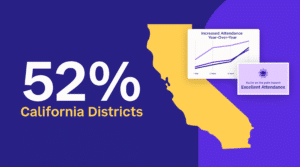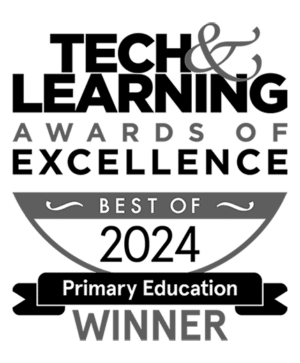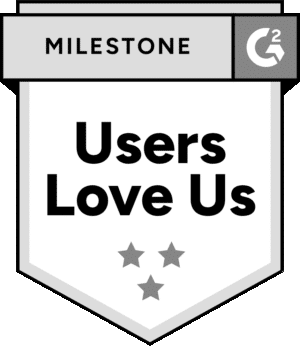Featured Resource
Why Over Half of California School Districts Trust SchoolStatus
Read More >Join Mission: Attendance to reduce chronic absenteeism in 2025-26! >> Learn How <<




Megan Harding, educational consultant in Omaha, NE, explores ways that coaches can cultivate compassion for themselves and those they work with, and how important it is now more than ever.
As much as we like to take control of the situations we’re faced with, as coaches we’re not always given that luxury. We might not always get a say about who we work with, what our work looks like, the expectations of our administrators, or even the framework we use. However, what we can control is how we support others and ourselves through compassion!
Before we can demonstrate compassion towards others and ourselves, we have to know exactly what it is and what it isn’t. It can often get mistaken for other feelings:
So what is compassion? Compassion is a combination of love and understanding. It’s when you take action to relieve someone else’s suffering, regardless of their backstory or history. Action distinguishes compassion from empathy. But before we can take action, we need to start by knowing ourselves.
There are many ways we can learn more about who we are. From those quizzes we’ve been taking our whole lives in magazines—admit it, you know you’ve taken at least one!—to diving deep into the Enneagram or the Gallup Strengths Survey, you’ve likely already taken a moment to learn more about yourself.
A quick challenge you can do right now is to search for a list of core human values. Then, narrow the list down to 10 words that really resonate with you. Having done that, can you narrow it down to 5? How about 3, or even 1? The remaining few words on your list are critical to who you are as a person, a peer, and an educator.
According to Elena Aguilar, “Perspective allows us to recognize the complexity of a situation and allows us to empathize with others, see the big picture, remove drama and identify a wider range of responses to an event.”
As instructional coaches, we have to remember that those we work with may have different values and beliefs from us. This doesn’t make them wrong or right—or make us better or worse—but we must acknowledge that these different perspectives exist.
One way to help shift our perspective is to focus on listening skills. This comes as no surprise; we hear it all the time. I love to talk, share, and brainstorm out loud, but to truly be compassionate, I need to listen.
While I agree that skills like pausing, paraphrasing, and questioning are hugely important to coaches, I have also found another tool to help me stay focused and compassionate: I set an intention for my listening in each conversation I have. Do I want to listen for the big picture or to make small connections with the person I am coaching? Should I try to listen with love and an open heart to help share their pain and stress, or with confidence that they have the ability to solve their own problems? Try setting an intention for your next coaching conversation and see how it changes the way you listen.
Once you’ve checked your values, worked towards action with compassion, and done your best listening, you may still find teachers being resistant to working with you. So then what, you ask?
It can help to reframe what we call “resistance.” So often, it’s a cover up for something else. Resistance can be a disguise for anger, mistrust, sadness, confusion, distrust, and even exhaustion. Bottom line: Resistance is emotion and coaching emotion is hard!
All educators deserve to bring their whole self to work each day. Real educators talk about emotions and growing instead of talking badly about students and parents. The more we are honest with each other about the emotions we face, the more we will learn how to coach people through those emotions, and get through what may seem to be resistance.
Most teachers are often not aware of how much power they have in any given situation, and often don’t see what’s within their control. If we can coach through the biases and triggers they might be bringing to the table, then we can then begin to shift perspectives, assume positive intentions, and strengthen our teams and our relationships.
Coaching in its very nature is compassionate. We take action every day to help educators become better and, in turn, create better student outcomes. As we face a year of much uncertainty, it’s easy to fall into pity and sympathy, but we’re in the perfect role to help people rise up and pivot as many times as they need to—compassionately.
Megan Harding works as an Educational Consultant in Educational Leadership for ESU#3 in Omaha, NE. This is her fifth year working with three local districts on instructional coaching of all types and for all educators. Prior to her work at the service unit, Megan was an elementary principal for four years and a third-grade teacher for eight years.
Professional learning, especially through coaching support, is her passion and she loves to support education in any way she can. Megan knows that bringing compassion and resilience to teachers can make a huge difference in student outcomes.
{{cta(‘352a410e-db79-4f33-a482-d301e8041965′,’justifycenter’)}}
Illustration by Dmitry Nikulnikov from Icons8.
 SchoolStatusSchoolStatus gives educators the clarity and tools they need to get students to class and keep them moving ahead. Through our integrated suite of data-driven products, we help districts spot attendance patterns early, reach families in ways that work for them, and support teacher growth with meaningful feedback. Our solutions include automated attendance interventions, multi-channel family communications in 130+ languages, educator development and coaching, streamlined digital workflows, and engaging school websites. Serving over 22 million students across thousands of districts in all 50 states, SchoolStatus helps teachers and staff see what matters, act with speed, and stay focused on students.
SchoolStatusSchoolStatus gives educators the clarity and tools they need to get students to class and keep them moving ahead. Through our integrated suite of data-driven products, we help districts spot attendance patterns early, reach families in ways that work for them, and support teacher growth with meaningful feedback. Our solutions include automated attendance interventions, multi-channel family communications in 130+ languages, educator development and coaching, streamlined digital workflows, and engaging school websites. Serving over 22 million students across thousands of districts in all 50 states, SchoolStatus helps teachers and staff see what matters, act with speed, and stay focused on students.
News, articles, and tips for meeting your district’s goals—delivered to your inbox.















Ready to learn more about our suite of solutions?
